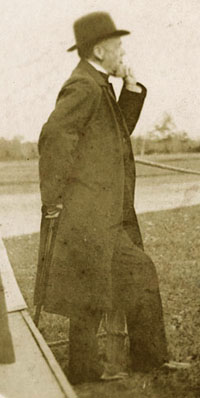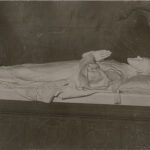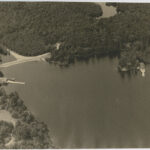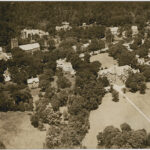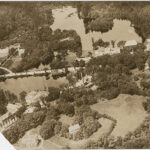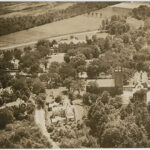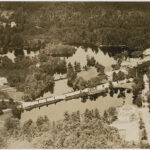Test Exhibit
Introduction:
The Chapel of St. Peter and St. Paul was the vision of the Reverend Dr. Henry Augustus Coit, First Rector of St. Paul’s School. Rev. Coit was here in Millville at the very beginning, to greet the first three students who attended St. Paul’s School, and he was instrumental in the growth and success of the School over the course of many decades. In the book, St. Paul’s: The Life of a New England School by August Heckscher (pg. 104), his concept for a new chapel, realized after twenty-five years of service as Rector, is outlined from his Anniversary sermon of 1881:
He foresaw a time when the number of boys in the school would have doubled, and the great wealth and progress of the times would have provided abundantly for their needs – comfortable lodgings, scientific apparatus, libraries and collections. And then the climax: “In my prophetic thought I enter with the great body of the school into a new and larger chapel.” The existing chapel, with its old ornaments and sacred things intact, formed in his vision an ante-chapel. “But the great throng passes through into a more glorious house of prayer.”
At the Anniversary celebration of 1882 the Alumni Association formed a committee to raise $100,000 for building a new chapel for St. Paul’s School. A sum that large (over 2.5 million of today’s dollars) had never been raised before at the School, and it was considered a daunting task. According to the May 27, 1886 Horae Scholasticae (pg. 146), the challenge was met, and funding was secured within four years:
April 3, 1886, was the actual date of the thirtieth anniversary of the School, and the committee in New York were gratified to be able to send to the Rector and Mrs. Coit on that day the announcement that the Chapel fund was completed.
With the funds now in place, the architect, Henry Vaughan, was hired to complete the design. Heckscher (pg. 105) describes Vaughan as:
… a high churchman, believing that English Gothic, with its roots in the fourteenth century prior to Henry VIII’s break with Rome, was the true style for the Anglican Church. In the course of a solitary, single-minded career he would design some fifty buildings embodying his architectural and religious ideals, mostly churches and school buildings throughout New England, where a design by Vaughan became the standard by which other structures were judged.
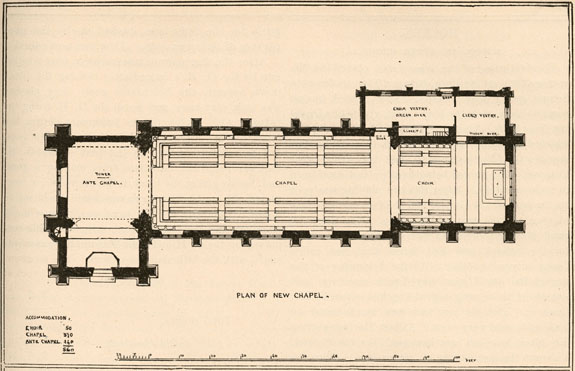
Vaughan’s original plan for the Chapel – note that the choir vestry and the clergy vestry were constructed on the opposite side as that shown above (Dec. 17, 1885 Horae Scholasticae, pg. 67).
In the book The Almighty Wall: The Architecture of Henry Vaughan (pg. 89), William Morgan looks at Vaughan’s celebrated career and affords the following distinction to Vaughan’s accomplishment of the Chapel of St. Peter and St. Paul:
While Vaughan’s appointment as architect of Washington Cathedral might be considered the climax of his career, the Chapel of Saint Peter and Saint Paul for St. Paul’s School begun twenty years earlier is Vaughan’s masterpiece. Had Vaughan died at, say, age fifty and had not lived to design many of his churches or Washington Cathedral, his place in the Gothic Revival in America would still be secure.
The selection below consists of some of the earliest photographs of the New Chapel, as it is more affectionately called, from the St. Paul’s School archives. In the 125 years that Vaughan’s masterpiece has served the community at St. Paul’s School the Chapel has undergone a number of additions and changes. All except the last photograph in the exhibit predate the completion of the tower in 1894, and provide interior and exterior views of the Chapel as it originally appeared, reflecting the vision of the architect and the dream of Dr. Coit.
Exhibit Quick Links:
(See full exhibit below)
Click on the thumbnails above or the titles below to access the individual entry pages.
Exhibit Entries:
Sorry, no posts matched your criteria.
